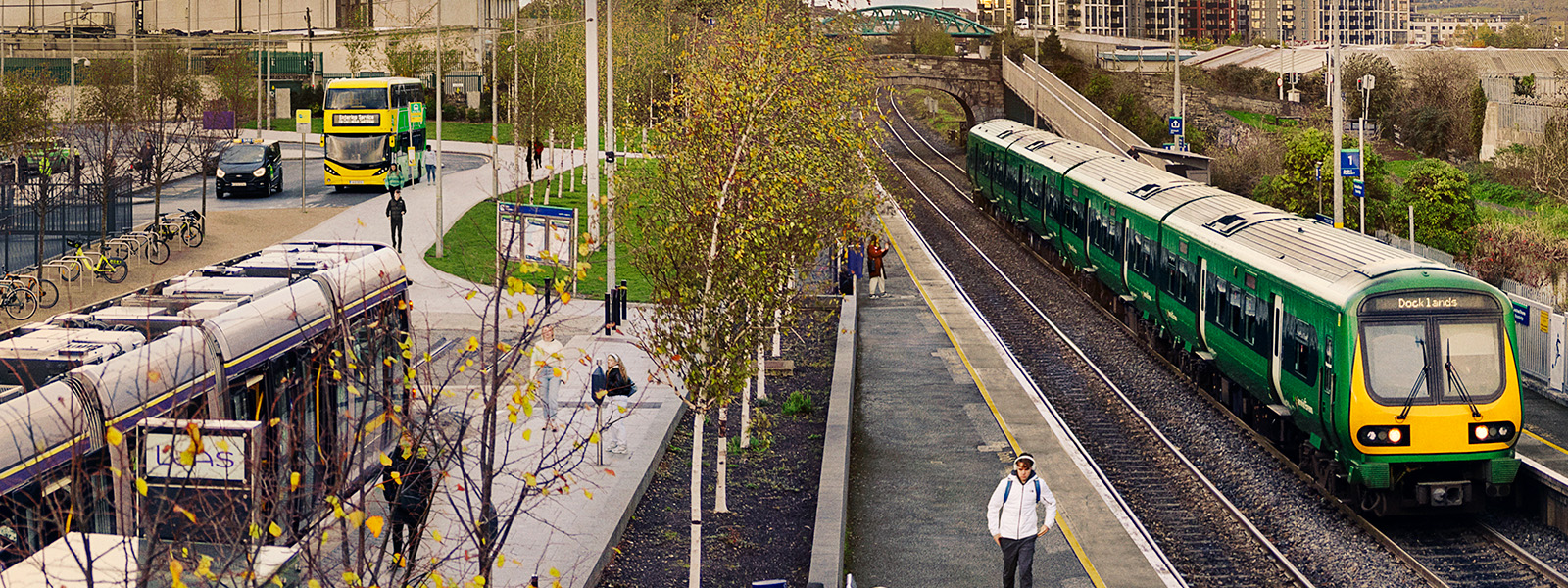The number of people travelling into Dublin’s City Centre using bus, train or Luas every morning has reached record levels, according to figures published today by Dublin City Council and the National Transport Authority.
The figures are included in the Canal Cordon Report, 2017 on mode share of people coming into the City Centre. The field work for the report was conducted over a number of days in November of last year.
The full report is available to download here – Canal Cordon Report 2017
107,160 people came into the city centre using bus, train or tram, the largest number recorded since the Cordon count began in 1980.
This now means that over half all journeys into the city in the morning are made on public transport.
Good news too for cycling and walking. 12,447 people cycled into the city centre – the highest number ever – with walkers accounting for 25,000 people crossing the canal cordon. Mode share for cycling is at 5.9%, with walking at 11.8%.
70% of all inbound trips crossing the canal cordon were made by a sustainable mode which includes cycling, walking, taxi and other public transport. The sustainable mode share has grown year-on -year since 2010. In the last 11 years the share for sustainable modes has grown by 9 percentage points.
In 2017, 147,166 trips crossed the cordon by sustainable modes in the three hour AM peak period. This is the highest level of mode share and person trips by sustainable modes since the cordon count began. This represents 21,323 more person trips by sustainable mode than were made in 2006.
The number of people coming into the city by private car has dropped from almost 65,000 in 2016, to 61,694 in 2017. This means that the mode share for cars has dropped to under 30% for the first time. It is now 29.2%, compared to 40% as recently as 2010.
Dublin City Council Owen Keegan CEO said: “Dublin City Council very much welcomes the fact that in 2017 more people than ever before crossed across the Canal cordon in the Morning Peak, the total numbers now recorded exceed the previous high recorded in 2006.
“Considering that this was achieved against a background of Luas Cross City construction, it shows the commitment of DCC and the NTA to multi-modal travel and particularly the incredible value of the additional bus priority measures in the City Centre implemented on the north and South Quays and the resultant reduction in journey times for bus users.”
Anne Graham, NTA Chief Executive Officer said: “These figures are very encouraging and are a tribute to all of the operators providing transport into the city who have managed not just to retain passengers but to actually grow their customer base.
“What we see here is a clear indication that people in Dublin are responding positively to the services that transport operators are providing every day.
“I’d also like to acknowledge the traffic management measures put in place by Dublin City Council which have no doubt facilitated this most welcome shift to sustainable modes.
“Public transport reduces the amount of greenhouse gases and other emissions that are being generated so is better for the environment and helps us meet our national greenhouse gas reduction targets.
“I have every confidence that we can all continue to build on this success.”
